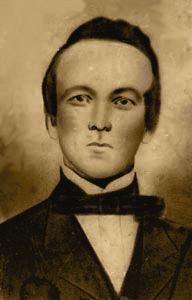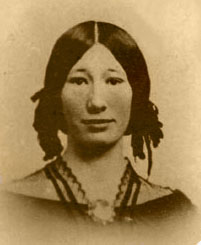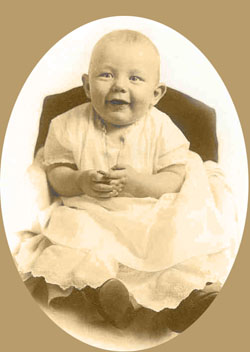|
Charles Platt
Son of Joseph K. Platt |
||||||||||||||||||||||
 |
||||||||||||||||||||||
| When the war between the states broke out in America, Charles came to the States from England to serve in the Confederate Army, in order to protect his interests in the cloth industry in Liverpool. He was enlisted September 18, 1862, may have became a captain in the service, and was discharged June 26, 1863. While in the service at Fall River, MA, he married a Scottish girl, Margaret Paton, on August 19, 1862. The South fell, and with it the hopes for cotton for the cloth industry. Charles returned to a ruined industry where he had been a designer of materials. One version of his death was that he died of poisoning from the dyes that were used in designing cloth. According to his daughter-in-law, Annie Martha Garner, he fell from the second floor of the cotton mill to his death. | ||||||||||||||||||||||
|
Notes say: "he was 5'8" high, light complexion, blue eyes, brown hair; by occupation, when inrolled, a baker oath of identity." Occupation was once listed as Baker-Warehouseman. When his son was born, Charles was living with Margaret at 30 Roden Street, Eventon England. |
||||||||||||||||||||||
|
Margaret Paton Platt
|
||||||||||||||||||||||
| His wife, Margaret Paton, was born in Glasgow, Scotland in 1843 to Thomas and Margaret Cov (Campbell) Paton, (for her Mother's story, click here) and came to America with her parents in 1844. She joined the Presbyterian Church at the age of 16 in Fall River, Massachusetts. Margaret was nineteen years old when she met and married Charles Platt. Their first baby was born in the United States; a baby girl named Harriet Margaret on July 17, 1863. Margaret and baby returned to Liverpool with her husband after the war, to help him recoup his losses. |  |
 |
||||||||||||||||||||
|
As a young woman
|
||||||||||||||||||||||
|
As a mature woman
|
||||||||||||||||||||||
| There she knew both joy and sorrow: Her son was born there on July 9, 1865 and her husband Charles died. When the son, Charles Campbell, was 6 years old, in 1871, the young widow with her mother and two small children sailed again back to the states. Charles gives us an account of his crossing below. The mother and grandmother were to cross the Atlantic Ocean five times before moving out west. One of those times they had a fleet of 7 ships lashed together with heavy ropes because of a storm. The ropes seemed like "weak threads". | ||||||||||||||||||||||
| Young Charles' account of his crossing: "In 1871, when I was six, I sailed to the States with my mother, grandmother and sister. I remember going through a great storm and the captain asked everyone to pray, "whether they knew how to pray or not". Grandma Paton was not at her place in the dining room and when they went to find her, she was on her knees in her cabin, with her hands clasped in prayer. " With her two children and widowed mother, Margaret Paton Platt went west to Logan County, Illinois, and after two years continued further west, to McPherson, Kansas, arriving in 1878. Near McPherson there was a huge ranch of over 4000 acres, where a Mr. Albert S. Crane had purchased a ranch in 1872 "with an initial capital of Three Million dollars: named "Crane's Ranch" or "Durham Park" by its owner. "...fine Durham cattle imported from Scotland. Seven tenant farms. Main ranch residence: 'White House'... W. D. Armstrong erected a two-story hotel and livery barn in 1902, the latter being burned to the ground in March, 1906, but was rebuilt at once." (May and June 1941: "Milking Shorthorn Journal", p.29, and 11, and '60th Anniversary of Durham 1887-1947'). On the ranch was a foreman, William D. Armstrong, and Margaret was hired as the chief cook, but later became the wife of Mr. Armstrong. They had four children, Clarence Marion (Who died in infancy), William Joseph, Thomas Belt, and Walter Albert. |
||||||||||||||||||||||
 |
||||||||||||||||||||||
| Richard Elliot Armstrong, Son of Walter Albert Armstrong, about 1913. | ||||||||||||||||||||||